[Apple II, Avalon Hill]
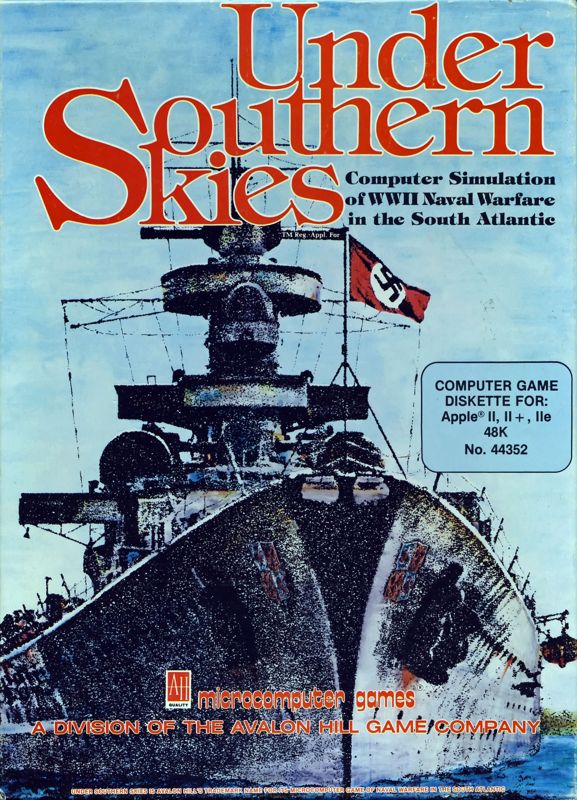
– Her Kapitän, we have seen an unidentified plane in the distance!
– Donnerwetter! Scuttle the ship immediately, Leutnant Narwhal!
– Impossible! The Kriegsmarine patched out the self-destruct option since last time. Our only hope is to sail straight into a neutral port and get impounded!
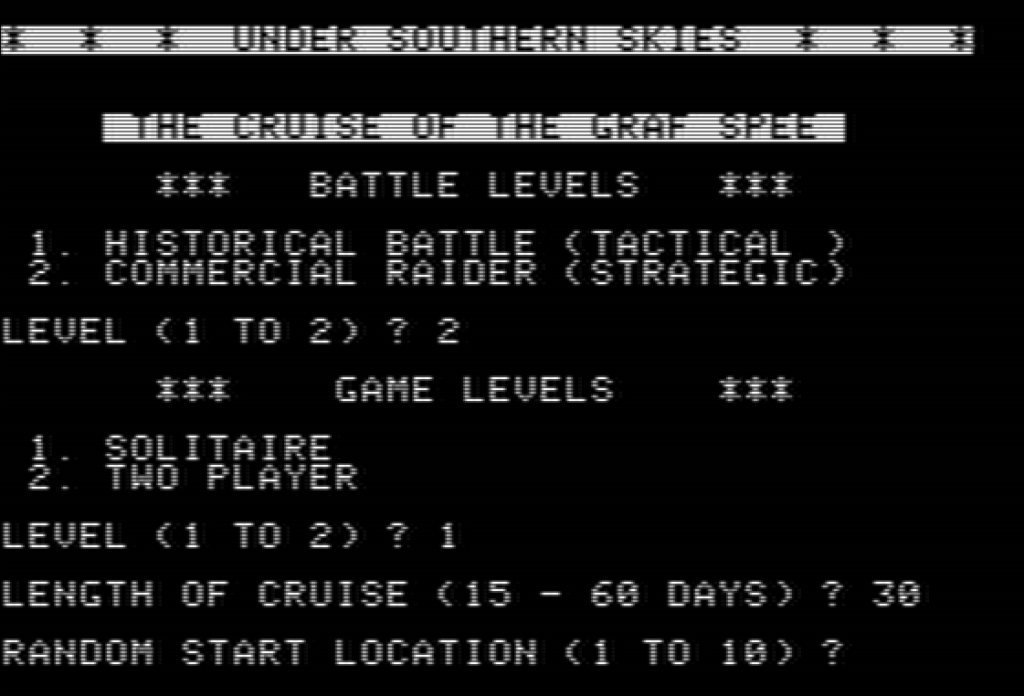
If you were a German sailor assigned to one of the German battleships, you could expect a life of misery, spending most of your time either waiting in icy Norwegian fjords or raiding arctic convoys, only to meet a horrible death caused by relentless air attacks sent by carriers you can never see. But if you were lucky, you could be posted to the Graf Spee, and life would be altogether different. You would race across warm southern seas, sink merchant ships, and finally scuttle your ship, ending the war in 1939 already in the quiet comfort of “internment” in sunny Argentina.
In Under Southern Skies, I’ll try to replicate the Graf Spee’s historical feat and ensure my crew survives to enjoy the good life in South America! Sure, I have tried this twice already in two comically terrible games (Raiders ’41, Admiral Graf Spee) but who knows – maybe third time’s the charm?
The game opens on a view familiar to anyone who played a Graf Spee-themed game, starting with Pursuit of the Graf Spee in 1982. Unlike in Pursuit, however, the solitaire game can only be played as the Germans, so this time I know where the Graf Spee [G] and its supply ship the Altmark [A] are, and I don’t know where the British ships are.
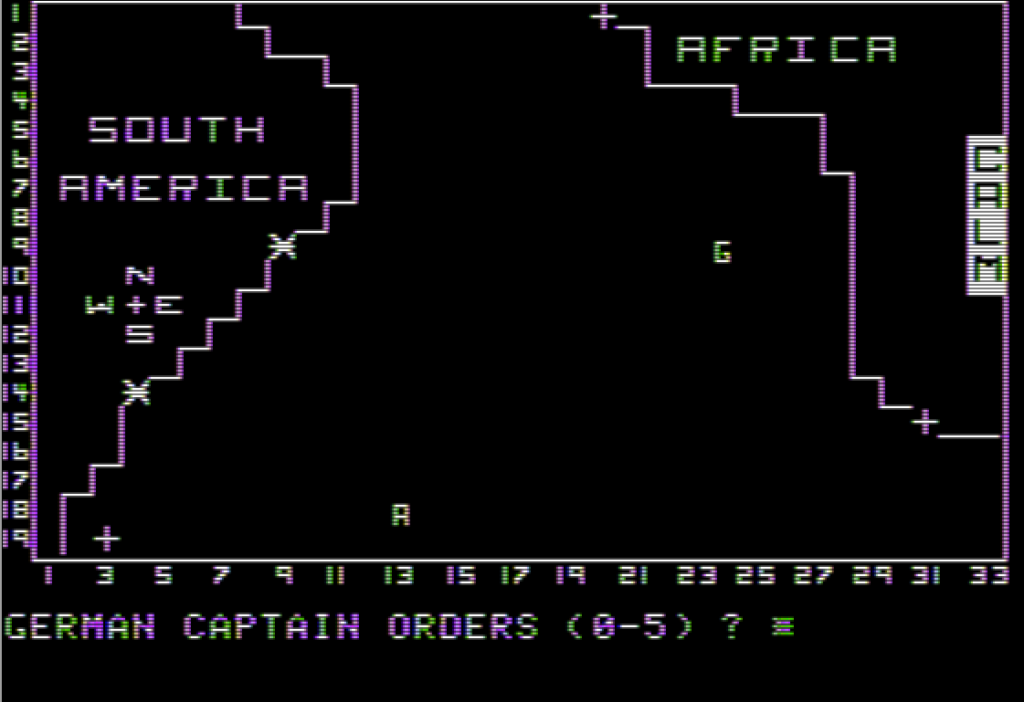
In the first turn, I can set a rendezvous point with the Altmark – any later communication will be picked up by the British. I am fine with where she is, however, and I slowly head West to intercept some traffic.
On the 4th of December, I intercept my first merchant ship. Unfortunately, she has the time to send a distress signal.
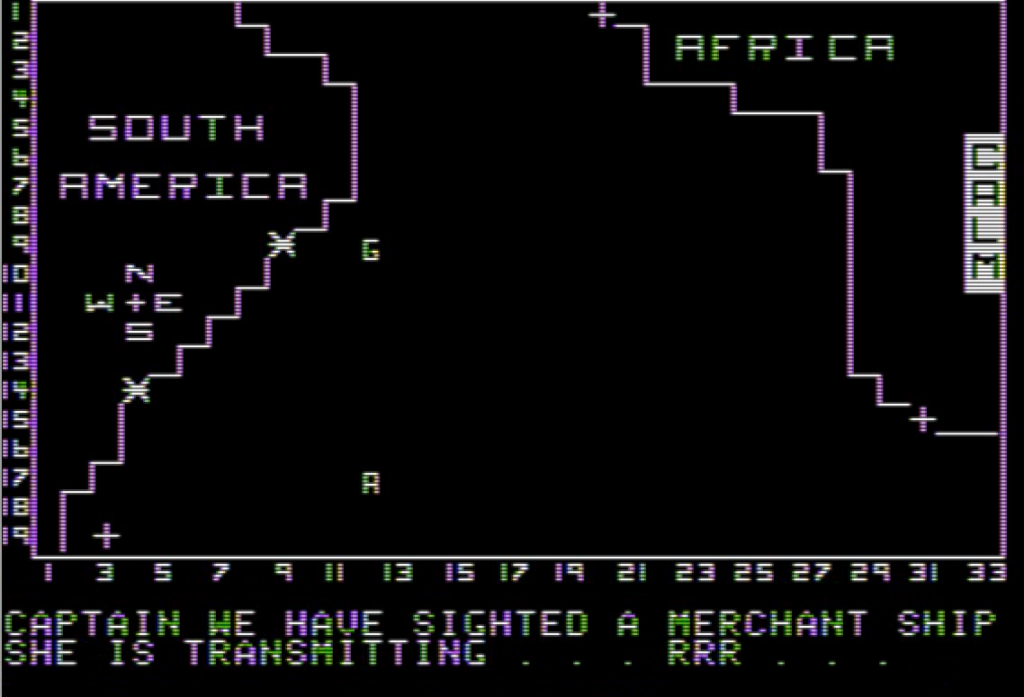
Well, nothing I can do about that. I signal the ship to stop, she tries to escape and I gun her down.
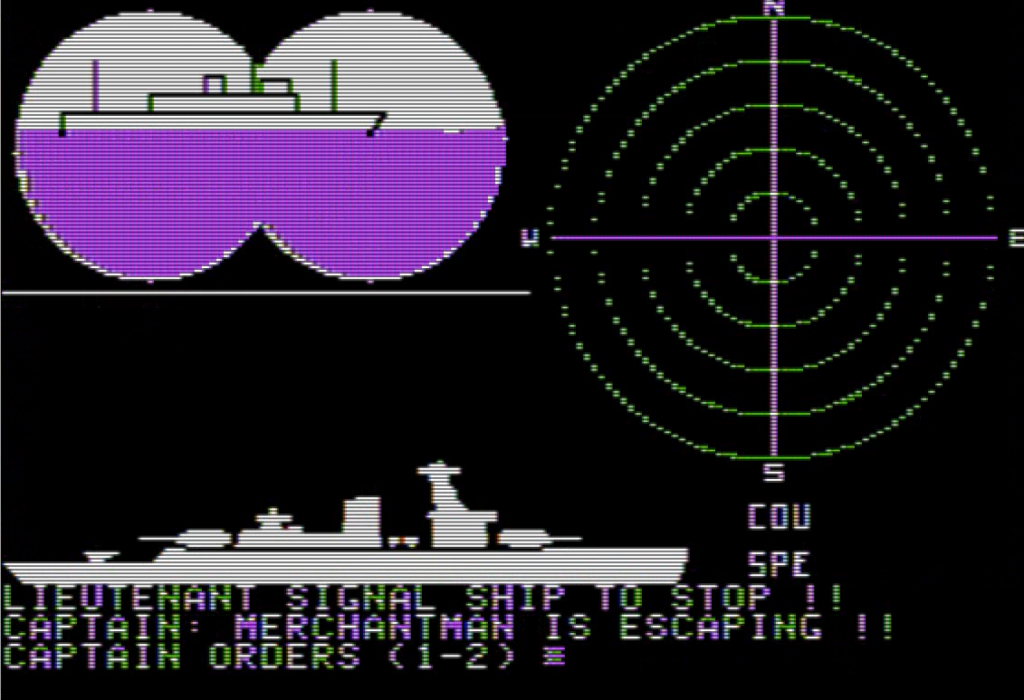
Given my presence is now known to the British, I immediately fly South at flank speed. Unfortunately, I am detected by British aircraft. Soon, I am under attack by carrier-based Swordfish!
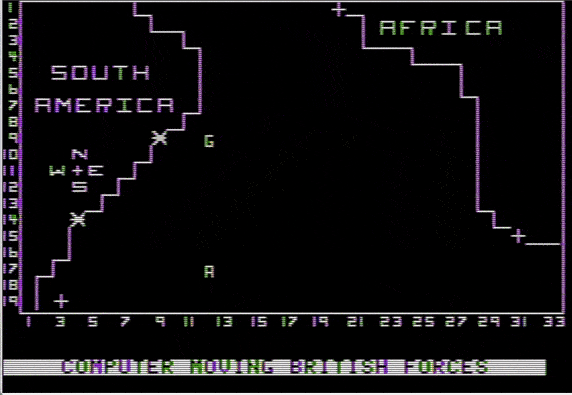
Honestly, this is a bit of a surprise given the Abwehr sent me a message earlier telling me that a British fleet was refuelling off Africa. I should never have trusted the landlubbers, I am probably a victim of their petty conflict with the B-Dienst.
I am now in a dire situation, because it is almost impossible to shake off a British carrier, given her planes report my location every “turn”. In the afternoon, I am caught back and engaged by a small cruiser group.
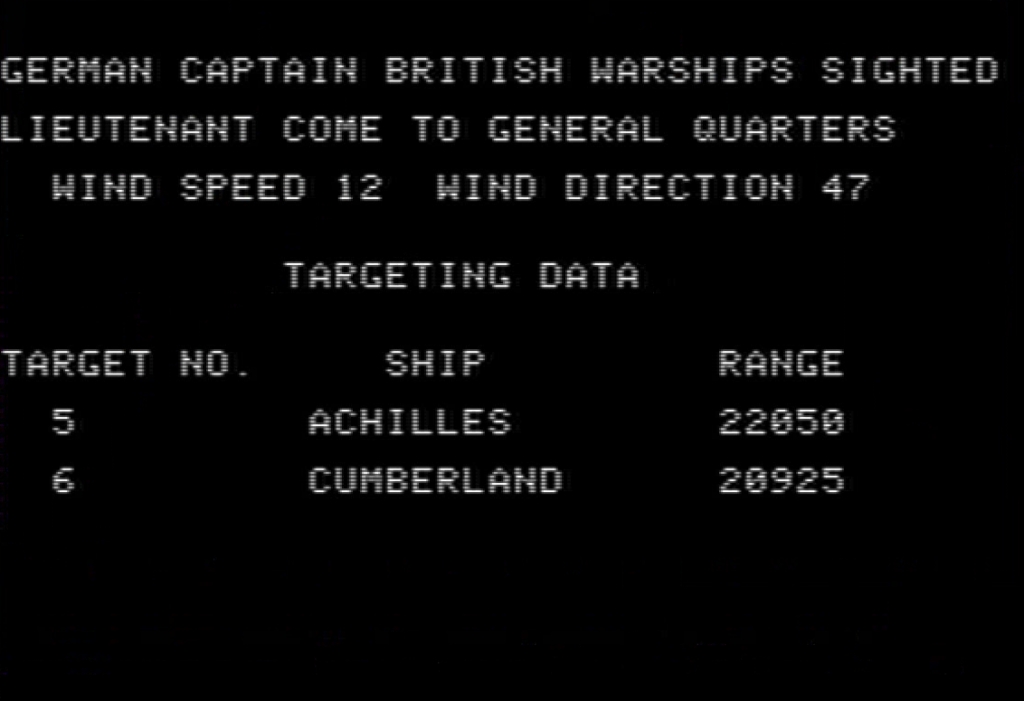
I am not exceedingly worried by those two. The HMS Achilles is a light cruiser, leaving only the HMS Cumberland as a threat, but even then its eight 8-inch guns should be no match for my 6 11-inch guns.
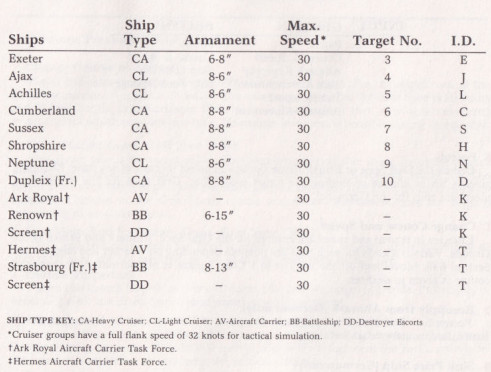
Even better, the ships are not sailing together, so I can engage them one after the other. I start with the HMS Cumberland and head South at maximum combat speed (15 knots).
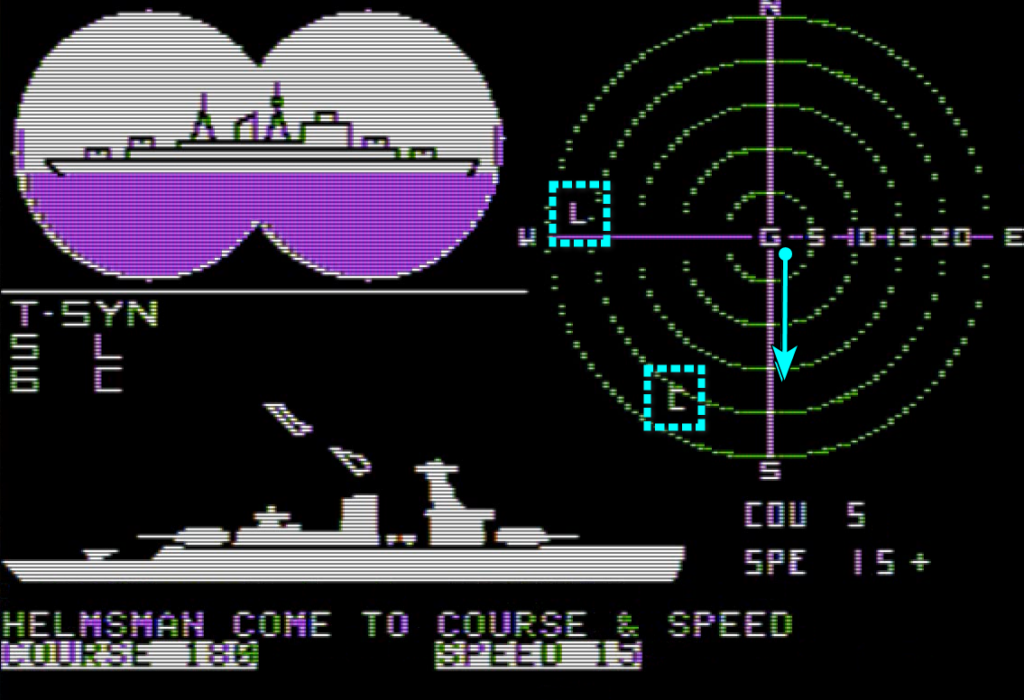
My targeting instructions are easy to follow even for the most dimwitted sailor:
- Primary guns: Shoot the HMS Cumberland
- Port secondaries: Shoot the HMS Cumberland
- Starboard secondaries: Shoot the HMS Cumberland
It seems a bit of a waste to have all secondaries shooting on the same target, given that at best only half of them will be able to really do it, but I gave that order because it takes a full turn to designate a new target. Whatever direction the HMS Cumberland takes, I want half my secondaries adding their fire to the primaries.
The battle takes some time, during which I hit the British cruiser a lot more than it hits me:
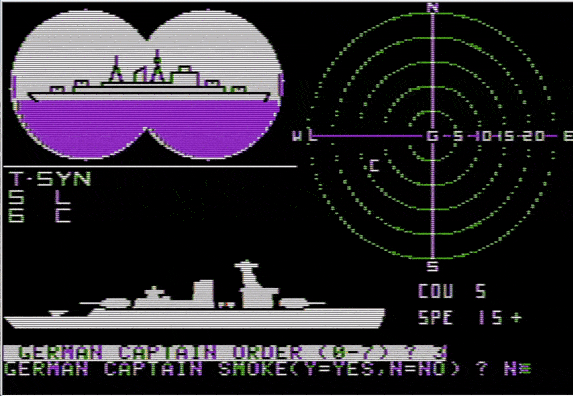
After some time, the HMS Cumberland disengages…
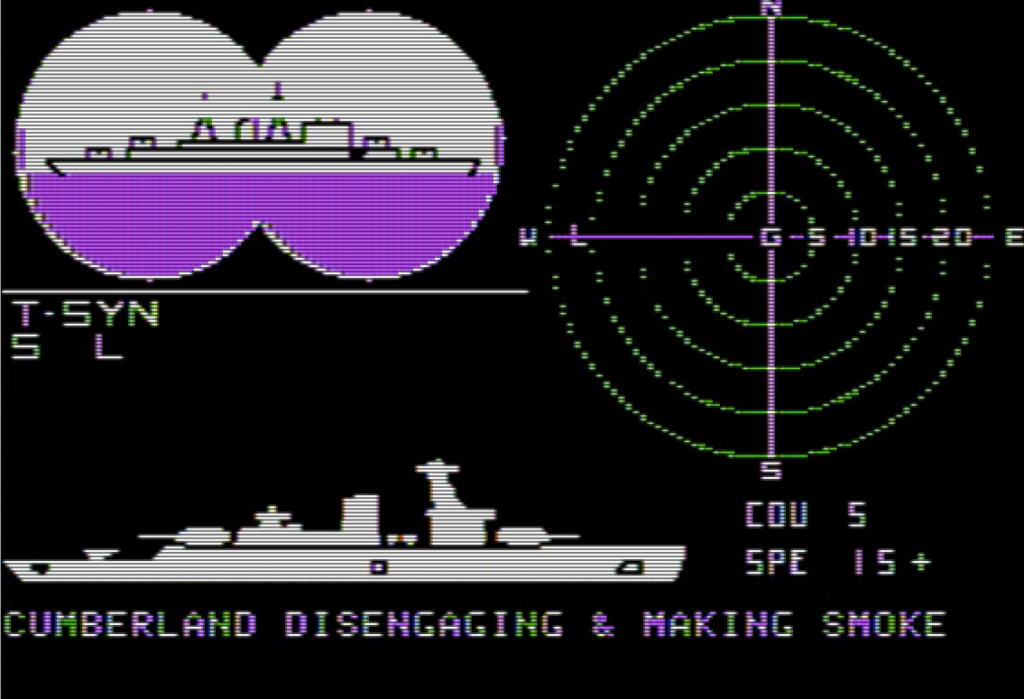
This leaves the HMS Achilles, which barely participated in the fun so far and is soon forced to disengage as well!
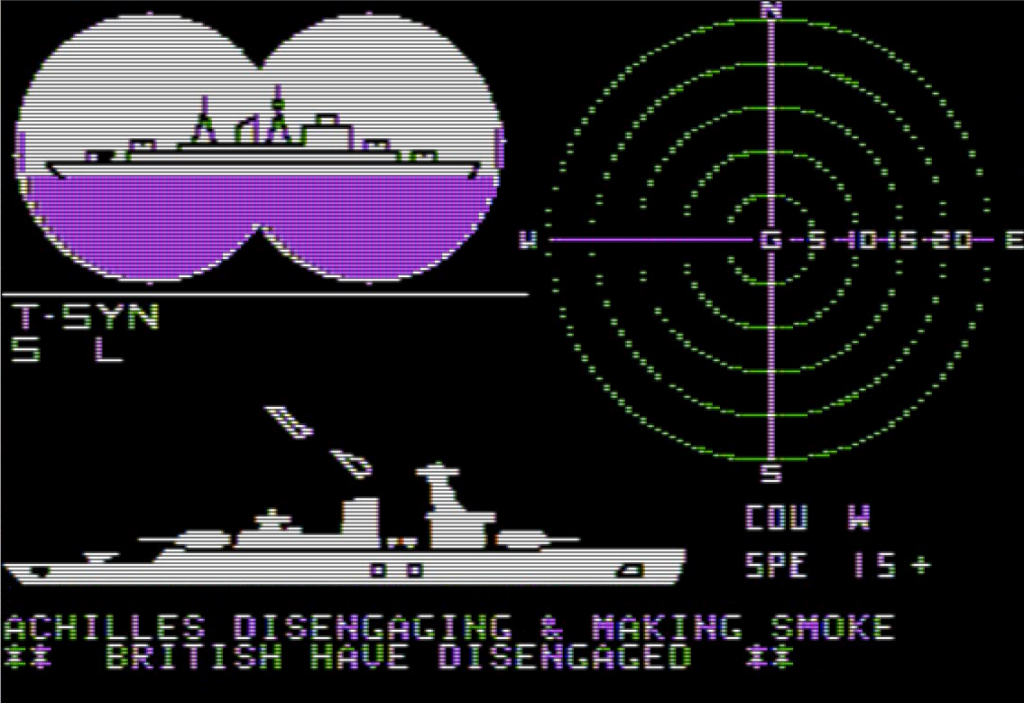
That’s a decisive victory as I only received marginal damage… but it has no impact on my carrier problem. The weather is rough, which does not stop the planes from operating but caps my speed at 15 knots.
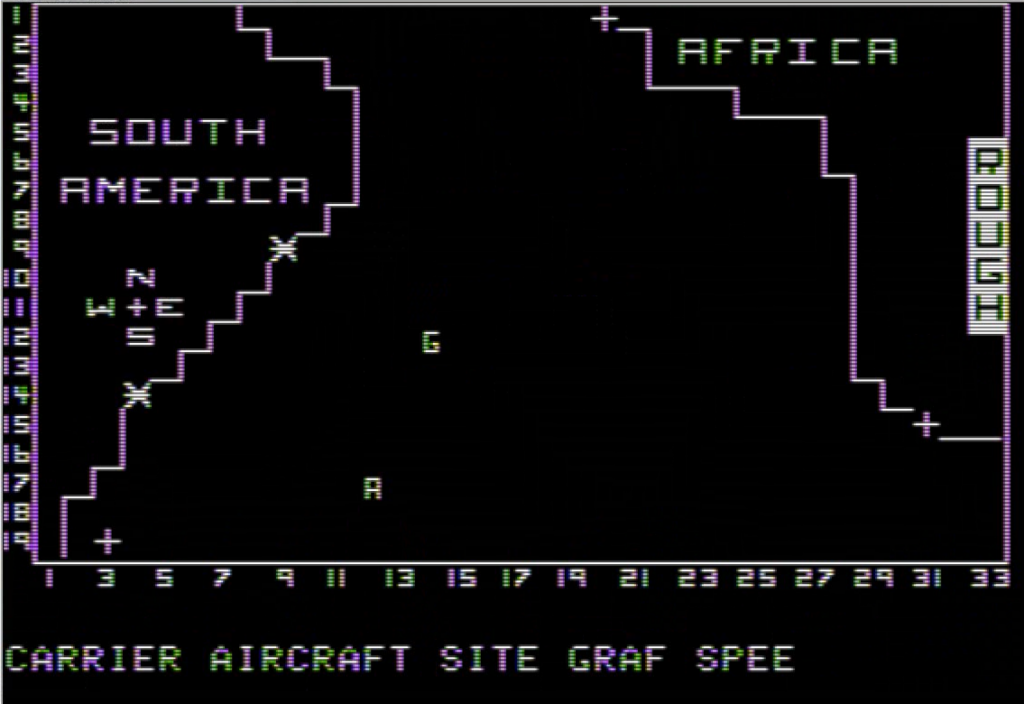
My only chance is for the weather to become foggy, but it never does. Starting on the 6th of December, I am attacked three times a day, which means not only the small HMS Hermes (1 attack/day) but also the HMS Ark Royal (2 attacks/day) joined the hunt.
The planes attack relentlessly. Their torpedoes miss – until they don’t.
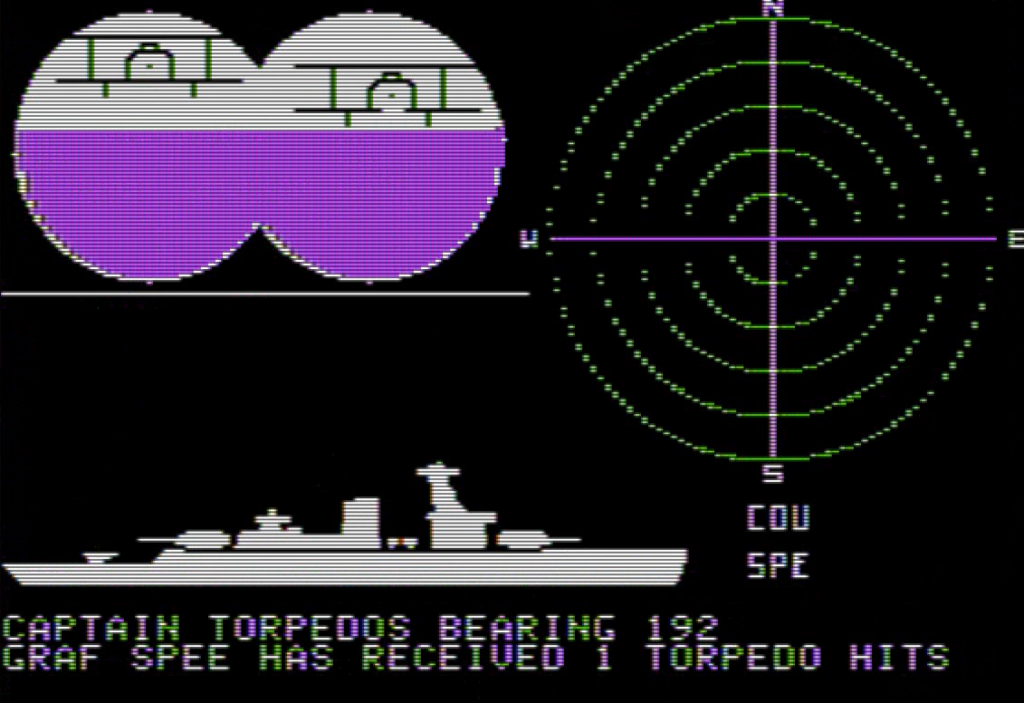
After two hits, my ship is immobilized in the middle of the Atlantic, and then sunk by more torpedoes on the 8th of December, Bismarck style. Oh well, no internment in Argentina this time.
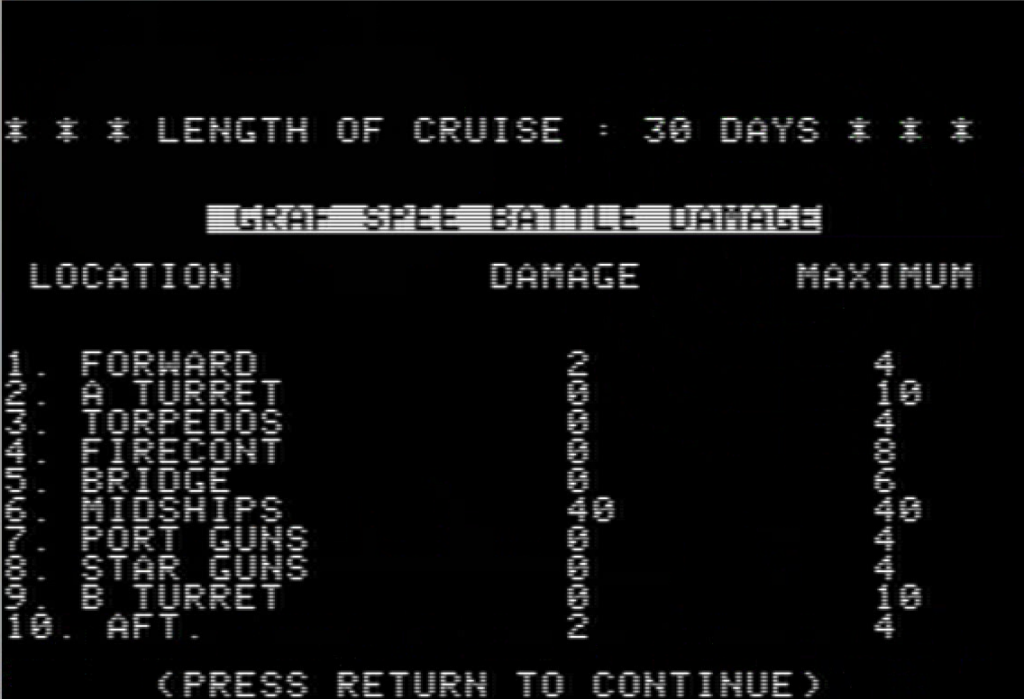
Midships is the equivalent of “HP”, which the torpedoes directly attack. The other damage came from the cruiser battle.
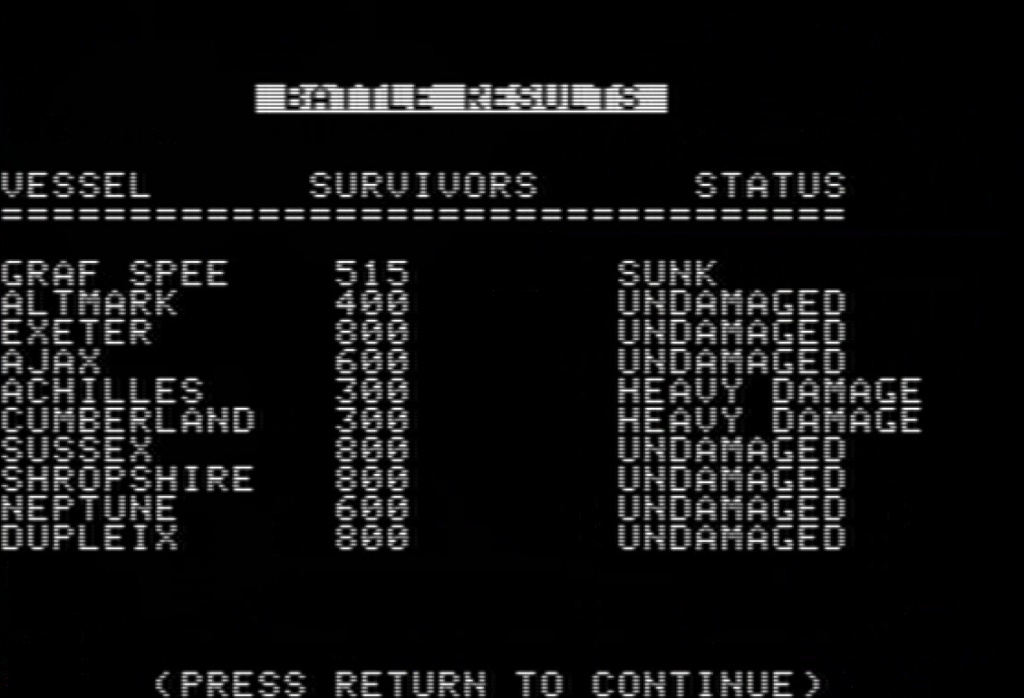
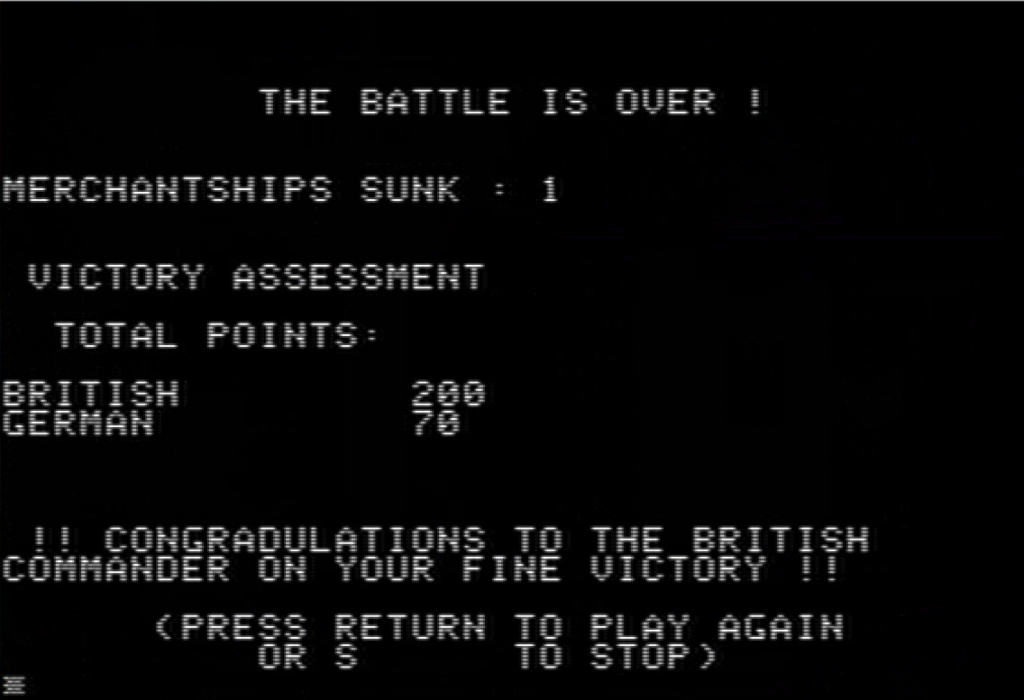
Review & rating
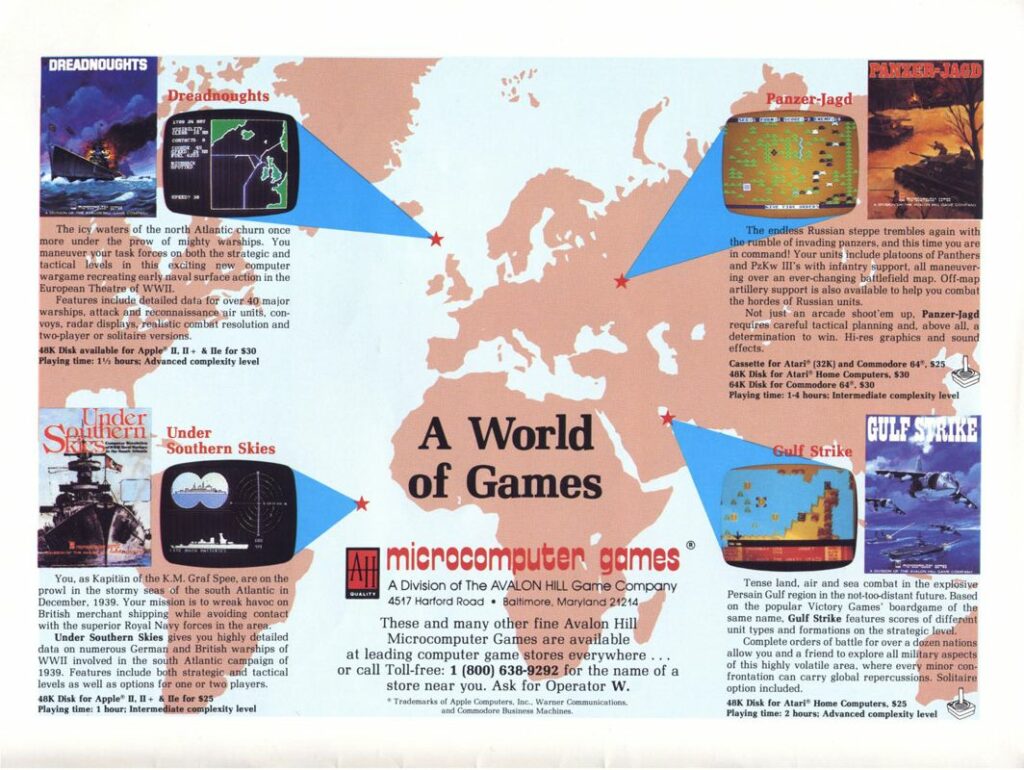
Under Southern Skies by Owen P. Hall Jr, published by Avalon Hill, USA
First release: April 1984 for Apple II
Genre: Naval Operations
Average duration of a campaign : 15 minutes max. The game claims 1 hour but you’ll be detected and sunk long before that.
Total time played: 1.5 hours
Complexity: Low (1/5)
Rating: Totally obsolete
Ranking at the time of review: 103/150
Context – By 1984, Avalon Hill had abandoned its systematic “port-on-all-the-platforms” approach and was, as far as I understand, publishing whatever game they received on whatever platform these supported. Naval warfare was popular with the freelance developers, presumably because water is not hard to represent visually and the genre requires the kind of hidden movement and complex bookkeeping that computers thrive in, and Avalon Hill ended up with no fewer than 5 “naval warfare” games:
- Ram! for DOS which covers ancient naval warfare,
- Clear for Action for Atari and TRS-80 which focuses on the end of the Age of Sails,
- Dreadnoughts for Apple II and C64 which deals with battleship combat in WW2,
- Gulf Strike which mixes land, air and naval combat in the modern era,
- Finally, today’s Under Southern Skies for Apple II,
It’s not quite the grand slam of naval warfare theme (it lacked pirates, WW1 combat and submarines) but it’s as close as it gets.
Under Southern Skies was developed by Owen P. Hall Jr, who will become somewhat important for wargaming a few years down the line. His profile is quite different from most of the developers we have seen so far. Born in 1941, Hall was 43 years old in 1984 and had already behind him a teaching career and a research career, both of which he would continue for decades. He had also some experience with business, having among other co-founded and presided over the Energy Management Corporation. Passionate about naval history and computer sciences, he combined those two skills in Under Southern Skies. The game seems to have been inspired by SSI’s Pursuit of the Graf Spee, as the general mechanics are the same (day & night turns, merchants off-map, direct control of the Altmark, strategical movement and tactical combat …). Of course, the theme is so narrow the designs may have converged naturally, or Hall could have been inspired by the same The General article as Billings was when he designed Pursuit. Whatever the case may be, Under Southern Skies was released exclusively for Apple II in April 1984 for $25.
I must suppose the relationship with Avalon Hill was not stellar – as I will show the game was probably barely playtested – because later in 1987 Hall put his business experience to good use and found General Quarters Software. General Quarters Software was relatively short-lived (its last game was released in 1990), but in that short span of time it published no fewer than 6 games, almost most of them naval-themed and designed by Hall, but at least one of them Napoleonic and designed by our friend Steve Krenek. Hall’s video game career seems to have ended after this venture, though not his passion for naval warfare: in the 2010s he would publish three WWI “historical fictions” (what-if novels) and one study on battlecruisers, before passing away in 2021.
Traits – Some games collapse on one feature or one error of balancing, and Under Southern Skies is one of those games. When reviewing Pursuit of the Graf Spee, I complained about how easily the Graf Spee could evade the allies (the player’s side in solitaire). Under Southern Skies is the opposite: it is almost impossible for the Graf Spee (the player’s side in solitaire) to escape once detected, owing to the extraordinary efficiency of the British carriers. British planes have 90% of chance every turn to detect the Graf Spee if it is within two tiles of a British carrier, with the test being done both before and after the British movement. The Graf Spee has a maximum speed of 2, just like the carrier groups, so once you are detected the only hope of the German player is for the weather to turn to fog. If it doesn’t, relentless Swordfish attacks quickly transfer the Graf Spee from under southern skies to under southern seas.
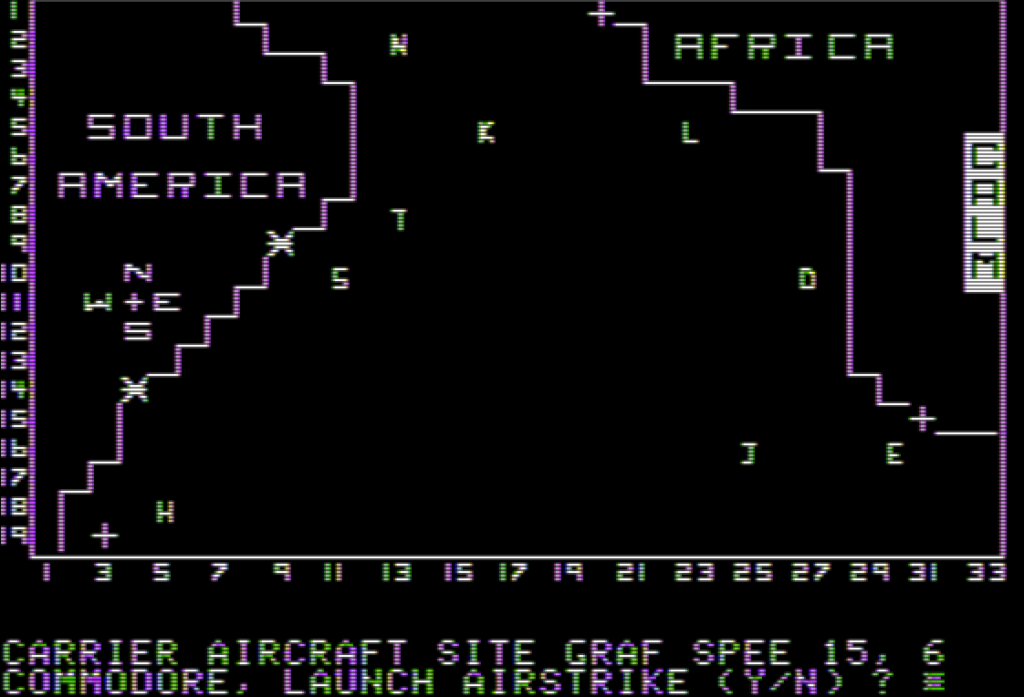
As you cannot escape the planes, all the other features collapse: while the design of tactical combats is OK, their stakes are more often than not zero because whatever the result of the gunnery duel a torpedo bomber will soon and inevitably sink you. You’ll never get an opportunity to rendez-vous with the Altmark or to resupply in a neutral port either.
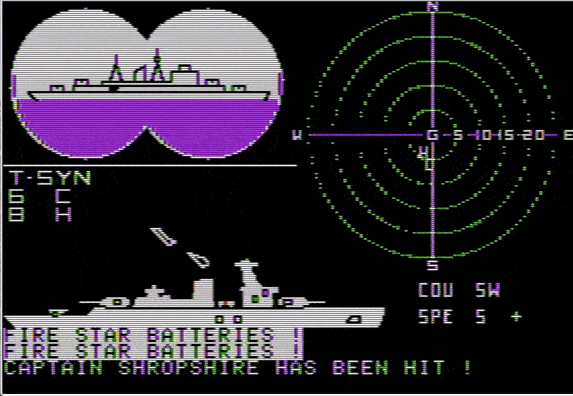
There are a few other issues with the game that in my opinion indicate both lack of playtest and lack of review. The UI for the British side is poorly done, with the ships appearing on the screen as you give them orders, so when you move your first ship (the HMS Exeter) you don’t see where the other ships are. Weirdly, this is not the case on the German side, where both ships are always displayed.
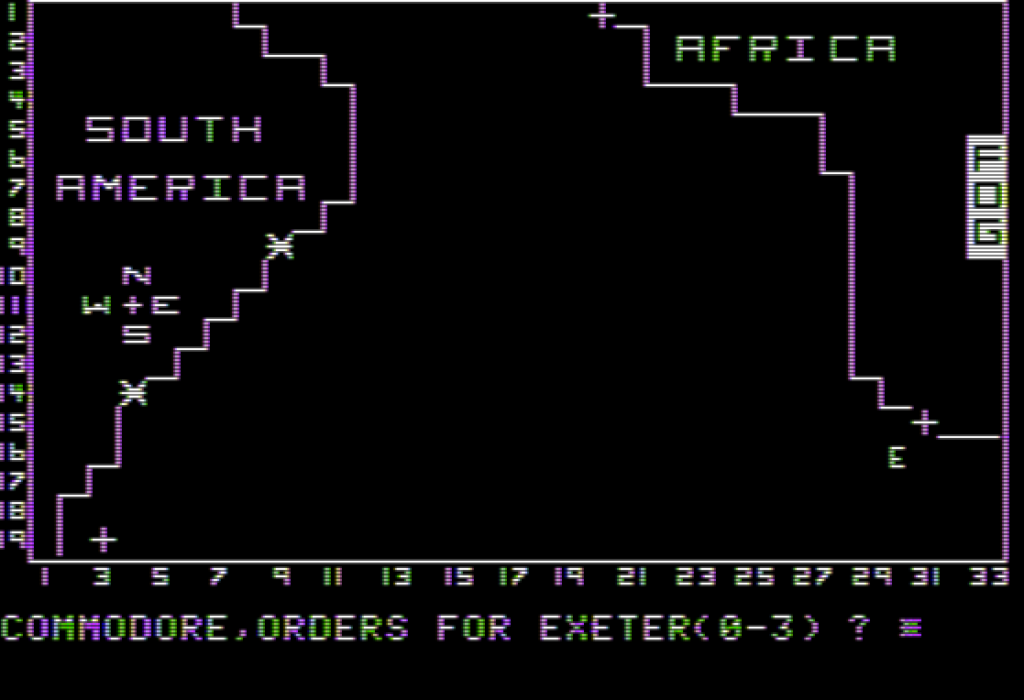
I am also upset by the baffling decision not to let you face the British battleships. According to the manual, the Graf Spee is so outgunned that the Graf Spee automatically loses when meeting the British battleships – even though the tactical section of the game manages engine damage (which could allow the Graf Spee to slither away) and even “lucky magazine hits” – so there should have been a chance to survive the engagement.
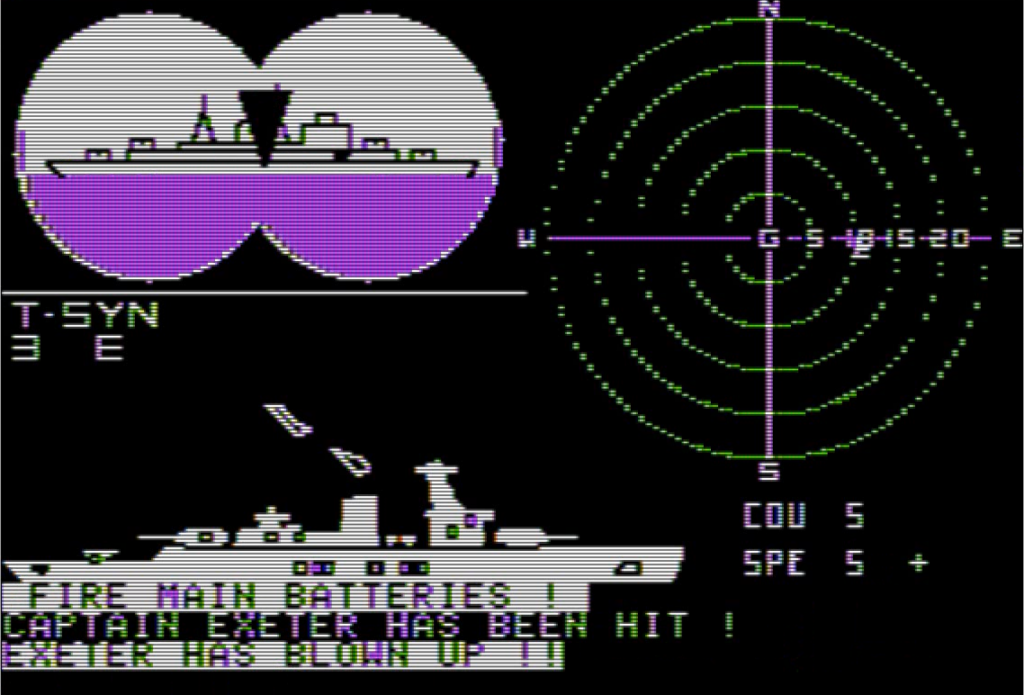
I could not test this “feature”, because the game is bugged anyway, and instead of meeting certain doom, the Graf Spee meets, well, nothing, with the game moving between the strategic map and the empty menu below until the British fail their detection check.
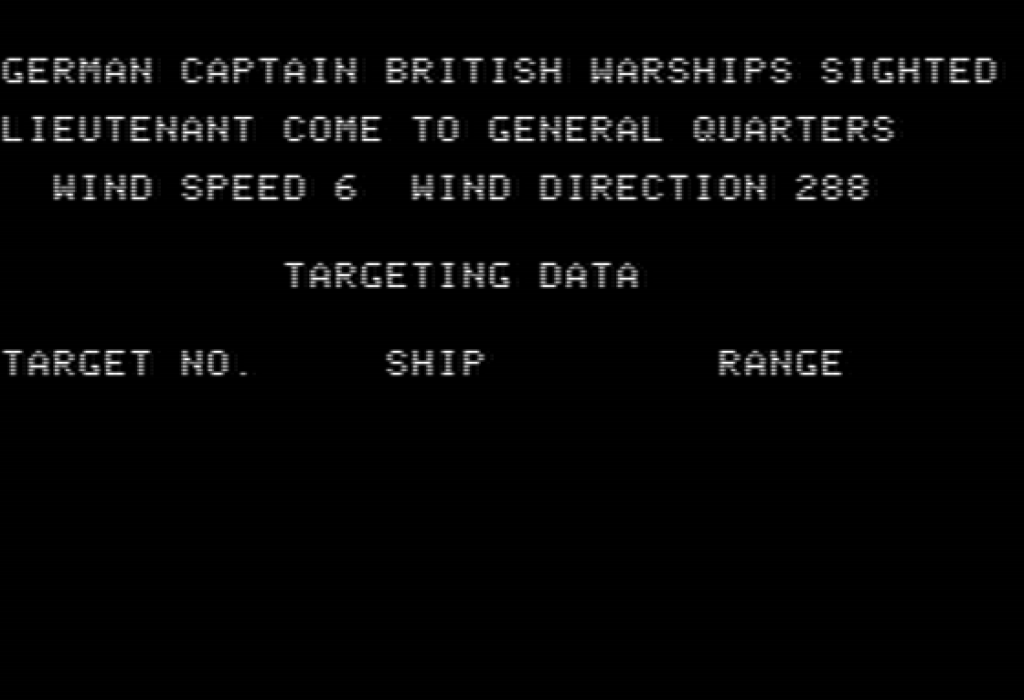
There are a few other bugs that should not have escaped playtest: British ships that speed away from a combat unharmed still disappear forever from the strategic map , and the German turn is sometimes skipped for no reason at all. Granted, those bugs are invisible in playtest, but they would have immediately ruined a multiplayer game.
Did I make interesting decisions? I thought so, but whatever I did the planes were poised to find me anyway.
Final rating: Totally obsolete, but one balancing away from being a somewhat acceptable game about the Graf Spee.
Reception
I could only find two reviews for Under Southern Skies:
- Johnny Wilson covers the game in the June 1984 issue of Computer Gaming World. He finds yet more bugs I had not noticed, but is impressed by the graphical presentation (“As a visiting friend who played the game said, “You really feel like you’re at the ‘Con.’ “) and concludes by saying that Under Southern Skies “is a versatile, interesting and challenging game if one is willing to overlook spelling errors, an occasional visible line number from the program and the flaws mentioned above.
- Paradoxically, it’s not the graphics which impressed Neil Shapiro from Electronic Games (November 1984), but everything else: “Under Southern Skies is an excellent game with much play value and reward in the form of historical simulation. If only the graphics were slightly better, it could be rated as a wargaming classic.”
As for me, I will be happy to return to the Pacific, but not without a short detour through North Africa, for a campaign never seen thus far on this blog.